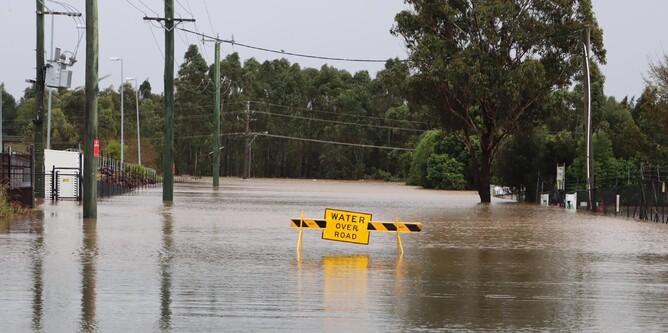Water security is under threat and governments, leaders and stakeholders are under pressure to create viable, cost-effective solutions. 52% of the world’s population will live in water-stressed regions by 2050. However, there is no ‘one shoe fits all solution’ to urban water resilience; climate shocks have surfaced in different countries in different forms, all of which impacting water security.
For some countries climate shocks have led to floods. In Pakistan more than 1300 people have died, 32 million people have been displaced by floods since June. Water security in the region has been compromised.
Other countries have suffered extreme droughts. In the Horn of Africa, earlier this year, drought combined with conflict thus worsening water poverty levels, with much water being unaffordable, and led to a huge uprising of malnutrition and disease in children under 5 years of age.
In many countries on the front line of the climate crisis, urbanisation and development has not been centred around water security, meaning that their urban water supplies are perceivably more vulnerable and the damage from climate change is that much more costly to mitigate and reverse.
Acting sooner rather than later to fix global water security and sanitation is key; every dollar invested currently yields approximately a $6.80 return. However, failing to act now is predicted to result in regional GDP losses of 2-10% by 2050, according to The World Bank.
‘Ground Zero’ was expected to hit Cape Town on the 12th April 2018, where the water tables ran dangerously low, catchments didn’t regenerate and drinking water was rationed on a daily basis. Alongside severe droughts, some of the big causes behind ‘Ground Zero’ included increased water demand due to Cape Town’s growing population and lack of foresight, planning and funding around urban water infrastructure.
A strategy for ecologically mitigating some damage was uncovered; it was found that invasive alien species of plants furthered the disaster by sapping the natural water supplies, impacting people, local biodiversity and agriculture as other local flora was outcompeted for resources. Backed and funded by stakeholders including Pepsico, The Coca-Cola Foundation and Water Unite, The Nature Conservancy was able to commence the removal of these plants, yielding up to 55 billion litres of water annually for the first 6 years of the project (The Nature Conservancy 2020).
While this episode can now be labelled as just a ‘close call’, the situation in South Africa should be seen as a warning. We need to understand and view our natural environment and the surrounding urban environment in balance with each other in order to maintain urban water security.
So what can we do to improve global urban water security?
Mapping The Way Forward
One strategy to improve water security involves the use of various mapping techniques that provide indicators of urban water resilience. There are many platforms ranging in depth of analysis that cities can use to pinpoint problem areas that are linked to weaker water security. Some of the most well known are:
OECD - Water Governance in Cities: this tool draws from a survey of 48 cities in both OECD and non OECD countries. The indicators assess the allocation of roles and responsibilities across all levels of government, multi-level governance gaps in urban water management and aims to target local decision makers and the role they play in urban water management in the face of current and future water challenges (OECD iLibrary 2022).
Swedish Water and Wastewater Association - Swedish Sustainability Index for Municipal Water and Waste Water Sources: this tool provides context based solutions to water and waste management without comparing municipalities. It is used for analysis and decision making, prioritising actions, investments, monitoring improvements and creating a basis for strategic planning to analyse the needs of municipalities (Najar and Pearson 2021).
Through mapping the hotspot problem areas, strategies and policies can be put in place to increase urban water security. Comparing different cities water urban water resilience can be helpful but climate shocks take different forms across the globe, and different cities will have different resources available, different policies in place and different stakeholders.
Cross Sector Collaboration is Key - Working With Utilities and Across Markets
More and more companies that want to improve a city's urban water infrastructure have found that the best way to do so is to work with domestic utilities companies.
Utilities can objectively view the state of urban water infrastructure on the ground and will have a view on how clients currently feel about using water. It is important that domestic utilities companies have a seat at the table for investment strategy decisions, alongside multi-level and cross sector collaboration between private and public market stakeholders.
Sanivation, an investee of the Water Unite Impact vehicle, spoke at World Water Week on how they worked collaboratively to fill the gaps between providers (domestic utilities companies), city stakeholders such as the city of Malindi, and funders, in order to provide innovative improvements to the sanitation sector.
This is not a complete list of strategies to improve urban water resilience; there are plenty of other viable strategies that can be used to improve urban water security, all of which involve a high level of understanding of how an urban population lives in symbiosis with the surrounding natural environment, alongside cross-sector collaboration.
But the key is this - we need to act now. Protectively improving urban water security is less costly, in terms of environmental damage, social suffering and economic impact, and we have a chance of regenerating and culturing natural capital. Waiting to act leaves an economic overhang which may be equally as devastating and irreversible as the accompanying environmental damage.
Bibliography
Cook-Patton, S., Drever, C., Griscom, B., Hamrick, K., Hardman, H., Kroeger, T., Pacheco, P., Raghav, S., Stevenson, M., Webb, C., Yeo, S. and Ellis, P., 2021. Protect, manage and then restore lands for climate mitigation. Nature Climate Change, 11(12), pp.1027-1034.
Cooper, R., 2020. Nature-based solutions and water security - GSDRC. [online] GSDRC - Governance, social development, conflict and humanitarian knowledge services. Available at: <https://gsdrc.org/publications/nature-based-solutions-and-water-security/>.
Najar, N. and Persson, K., 2021. A Sustainability Index within Water and Wastewater Management in Sweden: An Evaluation of Eight Case Studies. Water, 13(14), p.1879.
OECD iLibrary 2022. Toolkit for Water Policies and Governance. [online] Available at: <https://www.oecd-ilibrary.org/environment/toolkit-for-water-policies-and-governance_ed1a7936-en>.
The Nature Conservancy. 2020. Science Behind the Scenes in Cape Town. [online] Available at: <https://www.nature.org/en-us/about-us/where-we-work/africa/stories-in-africa/new-tool-validates-cape-town-water-fund/>.
UNCCD. 2021. New WRI research found it Could Only Cost 1% of GDP to Solve Global Water Crises | Knowledge Hub. [online] Available at: <https://knowledge.unccd.int/publications/new-wri-research-found-it-could-only-cost-1-gdp-solve-global-water-crises>.

